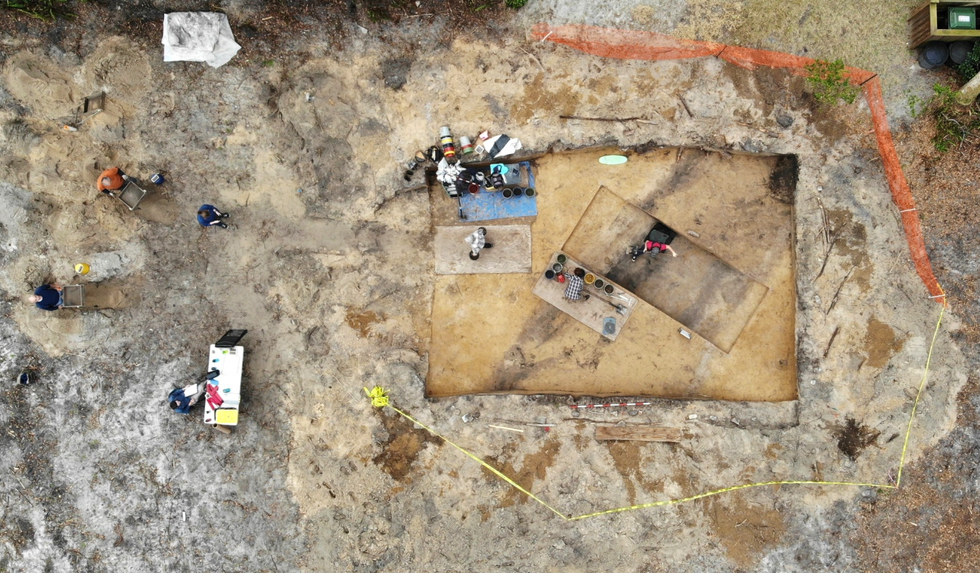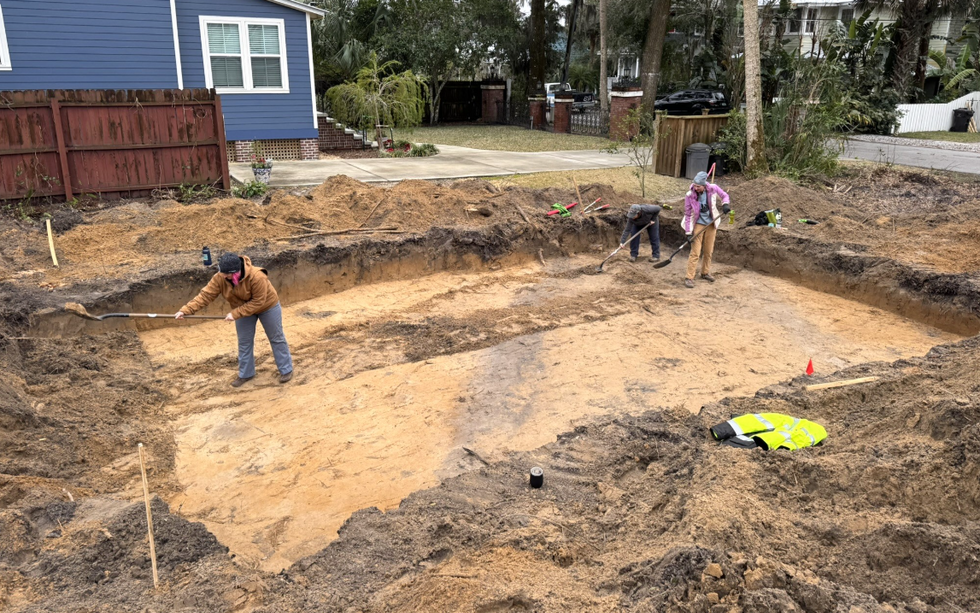MYSTERIOUS human remains found in bog believed to be over 2,000 years old
GB News
The dig revealed a dried-up moat from a British redoubt from the 20-years when Britain controlled Florida
Don't Miss
Most Read
Trending on GB News
Archaeologists in St Augustine, Florida, have unearthed remnants of the city's brief British colonial period during a recent excavation.
The dig in the historic Lincolnville neighbourhood revealed a dried-up moat from a British redoubt, a small military outpost constructed during the 20-year period when Britain controlled Florida.
The excavation concluded in February and was conducted ahead of planned construction work in the area.
"We knew there were a series of British redoubts," city archaeologist Andrea White told Fox News Digital.

The dig in the historic Lincolnville neighbourhood revealed a dried-up moat from a British redoubt
FACEBOOK/ City of St. Augustine Archaeology Program
These fortifications were built because British inhabitants feared potential Spanish attacks after gaining control of Florida in 1763.
"The Spanish actually attacked both Mobile and Pensacola," White explained. "So there was a great fear that there could be an attack on St. Augustine."
St Augustine was established by the Spanish crown in 1565 and remained primarily a Spanish military town for its first 200 years.
In 1763, through the Treaty of Paris, Britain gained control of Florida when Spain traded it for Havana, Cuba.
MORE LIKE THIS:
- Archaeology breakthrough as hundreds of 1,000-year-old skeletons discovered under UK university campus
- Archaeology breakthrough as scientists uncover remnants of ancient garden at Jesus Christ's burial site
- Archaeology breakthrough ends decades of mystery as huge insight into prehistoric life uncovered
This British period lasted only 20 years, ending after the American Revolution when the Spanish crown regained control of Florida.
The United States didn't acquire the territory until 1821.
One of the most surprising aspects of the excavation was the scarcity of artefacts found at the site.
"In urban context, we're used to finding tons of artefacts because people have lived here for over 4,000 years, but in this case, it was really the lack of artefacts that surprised us," White said.
However, archaeologists discovered well-preserved seeds in the moat, preserved by rising water tables over the centuries.
"They're working with an ethnobotanist to study these plant remains. "We're hoping to learn a lot more," White noted.
The redoubts represent some of the only British-constructed fortifications in the city.
"Everything else was either already here and the Spanish built it, and the British might've modified it a little — but this was something that was uniquely British," she said.

Archaeologists discovered well-preserved seeds in the moat, preserved by rising water tables over the centuries.
FACEBOOK/ City of St. Augustine Archaeology Program
"We know there's at least six additional [redoubts] out there."
White emphasised the importance of archaeology in the United States.
"I think sometimes we're surprised: 'Wait, there's archaeology in America, in our own backyard?'" she said, "Yes, there is archaeology everywhere."
St Augustine's city archaeology programme conducts over 60 projects annually.
"It's always fascinating... and it's a great way to learn about ourselves today, too," White added.







